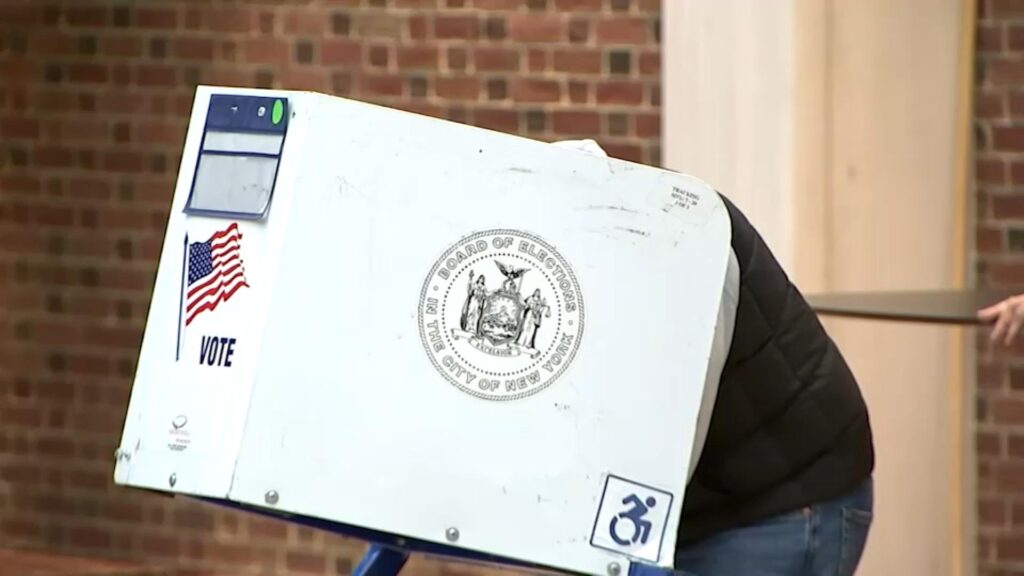New York City’s Early Voting Boom: A New Chapter in Civic Participation
Record-Breaking Early Voting Reflects Growing Political Engagement
This election cycle, New York City has experienced an extraordinary increase in early voting turnout, signaling a potential transformation in the city’s historical struggle with voter disengagement. Despite its dense population and dynamic political environment, NYC has long battled low voter participation rates. However, recent data suggests a revitalized enthusiasm for the democratic process, fueled by expanded voting access and targeted outreach efforts.
Several key initiatives have contributed to this surge, including longer early voting hours, a greater number of polling sites, and focused campaigns aimed at empowering communities that have traditionally faced voting obstacles.
- More than 750,000 residents cast their ballots early, marking a 40% rise compared to the last midterm election.
- Young adults aged 18 to 29 represented nearly 30% of early voters, highlighting a surge in youth political involvement.
- Boroughs like the Bronx and Staten Island, historically known for lower turnout, recorded unprecedented early voting numbers.
| Borough | Early Votes | Growth Since 2018 |
|---|---|---|
| Manhattan | 150,000 | 35% |
| Brooklyn | 250,000 | 45% |
| Queens | 200,000 | 40% |
| The Bronx | 90,000 | 50% |
| Staten Island | 60,000 | 55% |
Demographic Insights: Who’s Driving the Early Voting Uptick?
The remarkable increase in early voting is more than just numbers-it reflects evolving demographic dynamics and a shift in civic attitudes. Young voters, particularly those between 18 and 29 years old, have emerged as a pivotal group, motivated by urgent social and economic concerns such as climate change, student debt, and affordable housing. This generation’s heightened political awareness is reshaping participation patterns.
Moreover, neighborhoods with expanding immigrant populations and historically low voter turnout are showing significant gains, indicating that grassroots mobilization and improved voting accessibility are making a real impact.
- Millennials and Gen Z: Early voting increased by 35%, driven by issue-based activism.
- Communities of Color: Turnout rose by approximately 25%, reflecting successful outreach programs.
- Senior Citizens (65+): Experienced a 15% increase, likely aided by enhanced mail-in ballot options.
| Group | Increase in Early Voting (%) | Driving Factor |
|---|---|---|
| 18-29 Year Olds | 35% | Issue-driven participation |
| Communities of Color | 25% | Focused outreach efforts |
| Seniors (65+) | 15% | Expanded mail-in voting |
These trends underscore the effectiveness of multilingual voter education campaigns, extended polling hours, and community engagement initiatives in breaking down barriers and encouraging broader participation across diverse populations.
Maintaining the Momentum: Overcoming Obstacles and Leveraging Opportunities
While the surge in early voting is encouraging, sustaining this level of engagement beyond the primary season presents several challenges. Persistent voter skepticism, logistical difficulties in underserved areas, and declining enthusiasm as election day approaches threaten to dampen turnout. Continuous, transparent communication and proactive outreach are essential to keep voters motivated throughout the entire election cycle.
Conversely, this wave of participation opens doors for innovative strategies to deepen democratic involvement. Enhanced voter education, community forums fostering dialogue between constituents and officials, and the integration of digital platforms for real-time election updates can help maintain and grow voter engagement.
- Comprehensive voter education explaining ballot initiatives and candidate platforms.
- Community-led events promoting direct interaction with local representatives.
- Expanded polling site availability with flexible hours to accommodate diverse schedules.
- Digital mobilization through apps and social media to provide timely voting information.
| Challenge | Proposed Solution |
|---|---|
| Post-primary voter fatigue | Ongoing engagement campaigns |
| Unequal access to polling locations | Deployment of mobile voting stations |
| Language and information barriers | Multilingual voter resources |
| Distrust in electoral integrity | Transparency and accountability initiatives |
Innovative Approaches to Breaking Down Voting Barriers
Addressing the deep-rooted obstacles to voter participation requires a comprehensive strategy that tackles both systemic issues and individual concerns. Building trust through transparent communication and community-driven engagement is vital, especially in neighborhoods where political skepticism runs high. Informal gatherings led by trusted local figures can demystify voting processes and emphasize the power of each ballot.
Policy reforms and infrastructure improvements are also critical to easing logistical challenges such as limited polling sites, complex registration procedures, and restrictive voting hours. Combining these with innovative solutions like mobile voting units and extended early voting periods has demonstrated measurable success in boosting turnout.
| Strategy | Barrier Addressed | Impact |
|---|---|---|
| Mobile Voting Units | Access limitations in underserved communities | 15% increase in voter turnout |
| Extended Early Voting Hours | Conflicts with work schedules | Greater participation among employed voters |
| Community Workshops | Political apathy and misinformation | Enhanced voter confidence and knowledge |
| Targeted Digital Campaigns | Youth disengagement | 20% boost in youth turnout |
Ultimately, fostering enduring civic engagement depends on sustained collaboration among government entities, advocacy groups, and the electorate. Through continuous innovation, improved accessibility, and trust-building efforts, New York City can break the cycle of voter apathy and cultivate a more vibrant democracy.
Looking Ahead: Will This Early Voting Surge Last?
New York City’s unprecedented early voting numbers offer a hopeful sign of revitalized democratic participation. Yet, whether this surge will translate into consistent, long-term voter engagement remains uncertain. Experts emphasize that overcoming entrenched barriers and nurturing civic enthusiasm require ongoing commitment beyond this election cycle.
As political landscapes evolve and new challenges emerge, the city’s ability to sustain this momentum will be critical in shaping the future of its electoral participation. For now, the impressive turnout provides a promising glimpse of an electorate increasingly eager to exercise its voice and influence local governance.













